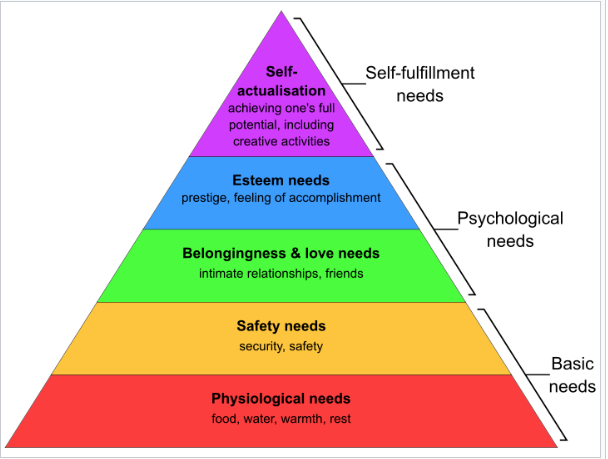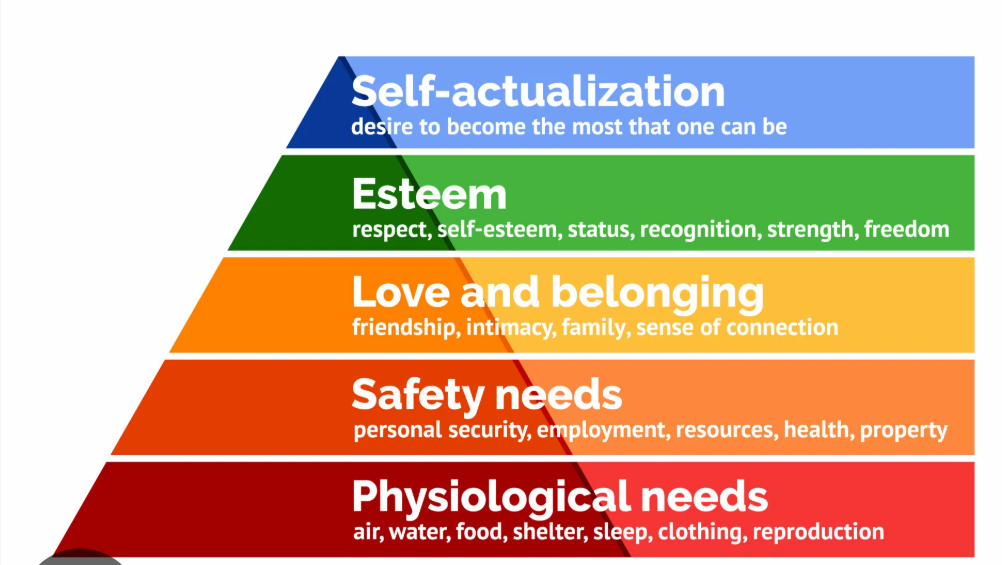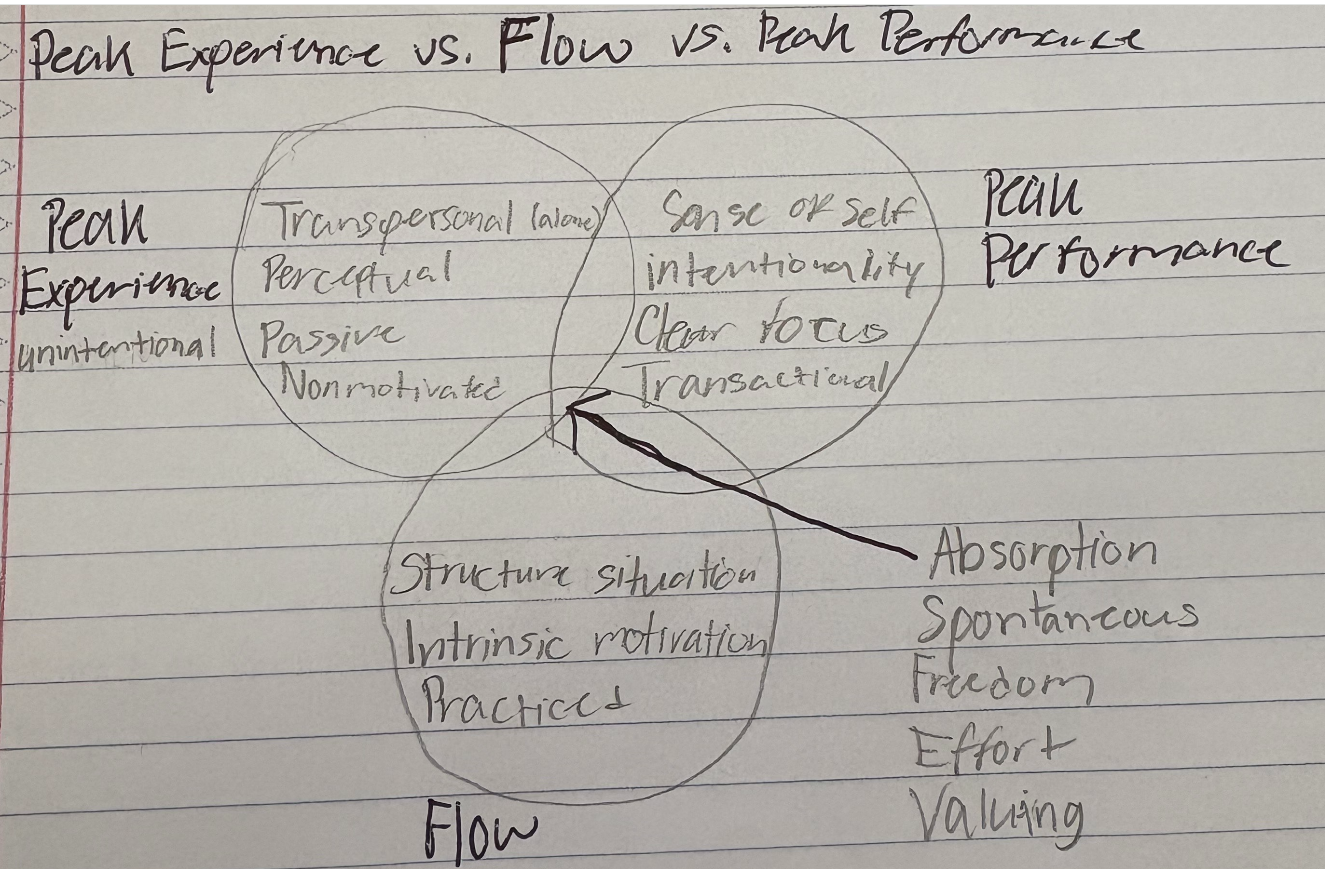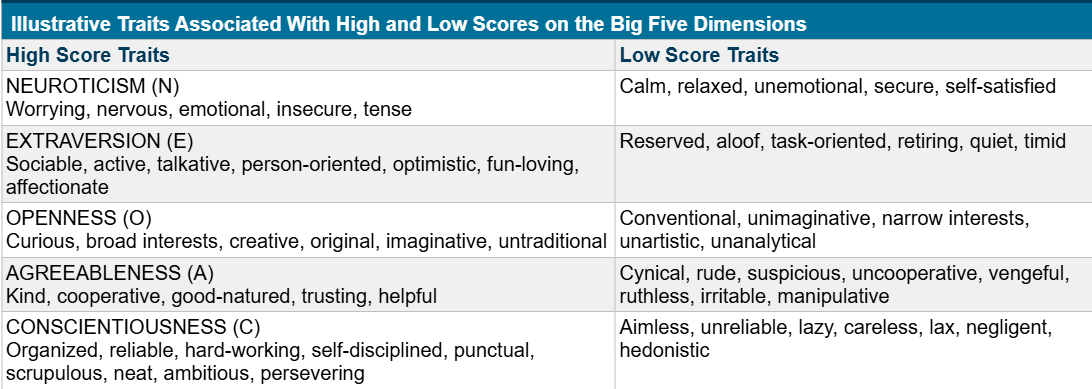Personality Psychology - Exam 2
1/109
There's no tags or description
Looks like no tags are added yet.
Name | Mastery | Learn | Test | Matching | Spaced |
|---|
No study sessions yet.
110 Terms
Carl R. Rogers (Quotes)
“I speak as a person, from a context of personal experience and personal learning.”
“I do not react to some absolute reality, but to my perception of this reality”
The “reality” we observe is really a “private world of experience …, the phenomenal field”
Phenomenal Field
The space of perceptions that makes up our experience—is a subjective construction.
Made up by “The Self”
Phenomenology.
The study of structures of consciousness as experienced from the first-person point of view
does not try to characterize the world of reality as it exists independent of the human observer
is interested in the experiences of the observer: how the person experiences the world
Structure
The Self
The Self
The individual perceives external objects and experiences and attaches meanings to them.
The total system of perceptions and meanings make up the individual’s phenomenal field.
“me,” or “I”
Self-Concept
An organized and consistent pattern of perceptions.
A personality structure
Ideal Self
The self-concept that an individual would most likely to possess.
includes the perceptions and meanings that potentially are relevant to the self and that are valued highly by the individual
Self-Consistency
The organism does not seek to gain pleasure and to avoid pain but, instead, seeks to maintain its own self-structure.
Congruence
No conflict between the perceived self and experience
Your actions match your perception of yourself
Incongruence
Conflict between the perceived self and experience
Your actions do not match your perception of yourself
Distortion
Allows the experience (one that does not align with the self) into awareness but in a form that makes it consistent with the self
Denial
Serves to preserve the self-structure from threat by denying it conscious expression
Threat being an experience that does not align with the self
Conditions of worth
Standards of evaluation that are not based on one’s own feelings, preferences, and inclinations but instead on others’ judgments about what constitutes desirable forms of action.
Need for positive regard
Rogers’s concept expressing the need for warmth, liking, respect, and acceptance from others.
Subception
A stimulus is experienced without being brought into awareness.
Authenticity
The extent to which the person behaves in accord with his or her self as opposed to behaving in terms of roles that foster false self-presentations.
Client-Centered Therapy
The therapist not only uses the technique of reflection but also plays a more active role in understanding the experiences of the client.
The critical variable in client-centered therapy is the nature of the interpersonal encounter that develops between the therapist and client, or what is referred to as the therapeutic climate
Contingencies of self-worth
The positive and negative events on which one’s feelings of self-esteem depend.
Existentialism
“a philosophical theory or approach which emphasizes the existence of the individual person as a free and responsible agent determining their own development through acts of the will” (google).
Human potential movement

Self-determination theory
All human beings have fundamental psychological needs to be competent, autonomous, and related to others (CAR).
In other words, these are viewed as the basic, universal human needs.
Competence - feeling effective in one’s actions.
Autonomous - the need to act in autonomous, self-directed (motivated by intrinsic rewards) as opposed (motivated by external rewards and punishments).
Relatedness - feeling connected with others and having a sense of belonging in one’s community.
Self-experience discrepancy
The potential for conflict between the concept of self and experience—the basis for psychopathology.
Carl Rogers
Humanistic Perspective
Born 1920-died 1987
Phenomenology
Study of conscious and subjective experiences of individuals
The goal isn’t to explain “reality” but rather understand the world as perceived and lived by the individual
Phenomenal Field
Everything potentially available to awareness at any given moment - more than just consciousness
Actualization: The Primary Motive
Become a fully functioning person”, be the best that you can be
be open to experiences
Live existentially - in the moment
Trust feelings, instincts, gut-reactions
Be creative - seek new experiences
Be satisfied with life - but always be open to new challenges
Types of Congruence
Perceived self vs. Ideal Self
Who we see ourselves as vs. who we believe we should be
Perceived self vs. experiences ( “dissonances” lowkey)
Who you see yourself as vs. your experiences
Growth will happen with …
Positive Regard
Acceptance, respect, sympathy, and love
Sources of Regard
Others
Self
Types of Regard
Conditional
Unconditional - (we should strive for getting this from others)
Self-Kindness
“Extending kindness and understanding ones self rather than being unnecessarily harsh”
A sense of common humanity
“seeing one’s experiences as part of the larger human experience rather than seeing them as separate and isolated’
Mindfulness regarding personal hardship or weakness
“Holding one’s painful thoughts and feelings in balanced awareness rather than over-identifying with them”
Self-compassion “isn’t it just self-esteem?”
“Self-compassion involves treating yourself with the same kindness you would show a friend to yourself” “Self-esteem is just feeling good about yourself”
Q-Sort Methodology
Series of cards, look at the cards and tell how much they are like you. You sort them based on how much the are like you, not like you, and sorta like you.
Abraham Maslow 1908-1970
Made the “Hierarchy of Needs”

Psychology’s Paradox
The majority of people are healthy
Personality theorists focus on abnormal personality
Focusing on a limited, and biased, pool of people is not an adequate way to develop theories
We should be studying people who are the healthiest
Self - Actualization Pattern
Accepting
Independent of culture
Democratic
Creativeness
Unhostile sense or humor
Discrimination between means and ends
BUT ALSO
Ruthless
Absent-minded
Overly Kind
Guilt and Anxiety
Being - Values (B-Values)
Truth
Beauty
Goodness
Justice
Wholeness
Aliveness
Self-sufficiency
Peak Experiences
Especially joyous and exciting moments … different from normal consciousness
Mystical
Trait
Words that describe people’s typical styles of experience and action
Traits can change throughout a persons life
Ture
Cardinal Trait
Expresses a disposition that is so pervasive and outstanding in a person’s life that virtually every act is traceable to its influence.
Central Traits
(e.g., honesty, kindness, assertiveness) express dispositions that cover a more limited range of situations than is true for cardinal traits.
Secondary Dispositions
Traits that are the least conspicuous, generalized, and consistent.
People possess traits with varying degrees of significance and generality.
True
Functional Autonomy
This means that although the motives of an adult may have their roots in the tension-reducing motives of the child, as Freud suggested, the adult grows out of the early motives. In adult life, motives become independent of, or autonomous from, earlier tension-reducing drives.
Factor Analysis
A statistical tool for summarizing the ways in which a large number of variables go together, or co-occur
Surface Traits
Represent behavioral tendencies that are literally superficial: They exist “on the surface” and can be observed.
Source Trait
In Cattell’s theory, behaviors that vary together to form an independent dimension of personality, which is discovered through the use of factor analysis.
Cattell identified 16 source traits. He grouped the 16 source traits into three categories:
Ability traits - refer to skills and abilities that allow the individual to function effectively. Intelligence
Temperament traits - involve the emotional life and the stylistic quality of behavior. The tendency to work quickly versus slowly, to be calm versus emotional, or to act impulsively or only after deliberation are all qualities of temperament.
Dynamic traits - concern the striving, motivational life of the individual. Individuals who are more or less motivated differ in dynamic traits.
Ability Traits
refer to skills and abilities that allow the individual to function effectively. Intelligence
Temperament Traits
Involve the emotional life and the stylistic quality of behavior. The tendency to work quickly versus slowly, to be calm versus emotional, or to act impulsively or only after deliberation are all qualities of temperament.
Dynamic Traits
Concern the striving, motivational life of the individual. Individuals who are more or less motivated differ in dynamic traits.
Objective-test data (OT-data)
In Cattell’s theory, objective test data or information about personality obtained from observing behavior in miniature situations.
Q-data
In Cattell’s theory, personality data obtained from questionnaires.
State
Refers to emotion and mood at a particular, delimited point in time
Neuroticism
In Eysenck’s theory, a dimension of personality defined by stability and low anxiety at one end and by instability and high anxiety at the other end.
Correlation Coefficient
“a statistical measure ranging from -1 to +1 that quantifies the strength and direction of a linear relationship between two variables” (Google).
Flow
“… a state of consciousness where one becomes totally absorbed in what one is doing, to the exclusion of all other thoughts and emotions.”
Flow involves the balances between two things:
Skill
Challenge
“FundaMentals” for Flow
Action-awareness merging
Clear goals
Unambiguous feedback
Concentration on the task at hand
Sense of control
Loss of self-consciousness
Transformation of time
Autotelic (fun) experience
“FundaMentals” for Flow
Action-awareness merging
The need for total absorption
Forget yourself - don’t worry about self and what others are thinking of you
Don’t be distracted by your competitors
Focus on the process
“FundaMentals” for Flow
Unambiguous feedback
Recognize that there are many sources of feedback (body, coach, teammate, opposition, etc.)
Focus on you own performance and recognize that feedback is neither good nor bad
“FundaMentals” for Flow
Concentration on the task at hand
Stay in the present
Refocus when distracted
use task oriented goals
keep things simple
“FundaMentals” for Flow
Sense of control
Having complete control in
Recognize what is and is not in your control
Peak Experience vs. Flow vs. Peak Performance

Self-Complexity
“a personality trait reflecting the number and distinctness of self-aspects (different roles, relationships, traits, and contexts that define an individual) within a person's self-concept” (google).
Aspects of me
The five-factor model
The Big Five Dimensions
OCEAN
Neuroticism
Extraversion
Openness
Agreeableness
Conscientiousness

fundamental lexical hypothesis
“the most important individual differences in human transactions will come to be encoded as single terms in some or all of the world’s languages”
facets
more specific components that make up each of the broad Big Five factors.

Honesty seems to be the 6th factor of the five-factor model, six-factor model
True
Person-situation controversy
A controversy between psychologists who emphasize the importance of personal (internal) variables in determining behavior and those who emphasize the importance of situational (external) influences.
Self-Complexity
Based on:
The number of self aspects one has
How interconnected are these aspects
Self Complexity can be low or high
A dimension running from low to high
Low = small number of aspects with high level of interconnections
High = large number of aspects with low level of interconnections
Low self-complexity is more vulnerable to stress because
stressors influence a greater percentage of who they are
Traits
“A generalized and focalized neuropsychic system (peculiar to the individual), with the capacity to render many stimuli functionally equivalent, and to initiate and guide consistent (equivalent) form or adaptive and expressive behavior.”
Functional Equivalent Ex.
different anxiety situations is still the same response
different stimuli cause the same functional response
Traits are not
Habits - showers, brushing teeth, nail biting, etc.
Attitudes - particular thoughts or beliefs about a particular thing
Allport’s Hierarchy
Cardinal - very pervasive, main thing that describes you, we are way more multidimensional them that
Central - highly characteristic, what would be put in a letter or recommendation, all people are like some other people
Secondary - narrow range, closer to habits
Types ex.
you either are or you’re not, you have it or you don’t
Lexical Approach
Looking at language to see what words describe human beings
The Lexical Hypothesis
Words arise in the language to capture “reality” and not the other way around
“a core assumption in personality psychology, proposing that important individual differences in personality are encoded in language as words, and that more significant traits will have more words dedicated to them” (google).
Factor Analysis
Find clusters of items that mathematically go together, find commonalities, reduce the amount of data you have
Cattel 16 PF
personality factors
Eysenck Super Factors
3 factors / really 2 introverted and extravert emotional unstable (neurotic) emotionally stable, psychoticism
Alfred Adler
He was the founder of Individual Psychology and a philosopher who emphasized understanding people as whole beings.
What is Individual Psychology?
People are driven by a need of belonging and community
It is the study of an individual’s life as a whole — every moment and impulse — to understand their attitude toward life.
What was Adler’s connection to Freud?
Adler worked with Freud to improve psychoanalysis but eventually left the movement to develop his own theory.
What did Adler believe was the ultimate goal of life?
To “be like God” — meaning people strive to emulate those they see as strong or powerful.
What did Adler believe our actions reveal?
Our actions show whether we are feeling superior or inferior.
Why did Adler consider social life important?
Because social interaction helps people grow; lack of it can lead to problems like antisocial behavior, criminality, or addiction.
How did Adler view birth order?
He believed birth order affects personality and behavior patterns.
What are the traits of the Oldest Child according to Adler?
The firstborn is initially the center of attention and often becomes responsible and achievement-oriented.
What are the traits of the Middle Child according to Adler?
The middle child is a peacemaker who competes with the oldest for attention and seeks their own niche.
What are the traits of the Youngest Child according to Adler?
The youngest is often pampered and protected, tends to be charming, and takes on a “leading role.”
Openness
Curiosity, creativity
Agreeableness
Trusting, cooperative
Person-Situation Debate - Walter Mischel’s thesis
Mischel wrote a book and in the first half argued that two main themes of personality isn’t accurate
Person-Situation Debate - Walter Mischel’s The argument
Behavior is not primarily determined by personality traits, but by the situation a person is in.
If traits are relatively stable and enduring predispositions that exert fairly generalized efforts on behavior,
Then behavior should be consistent across situations
Behavior is NOT consistent across situations
Therefore: traits do not influence behavior
Person-Situation Debate - Walter Mischel’s Conclusion
The correlation between personality and the outcome rely on the measurement used, evidence for cross-temporal stability is good
The personality coefficient
The correlation between a trait assessed with a paper and
pencil measure and that same trait assessed in any other way
rarely exceeds .30.